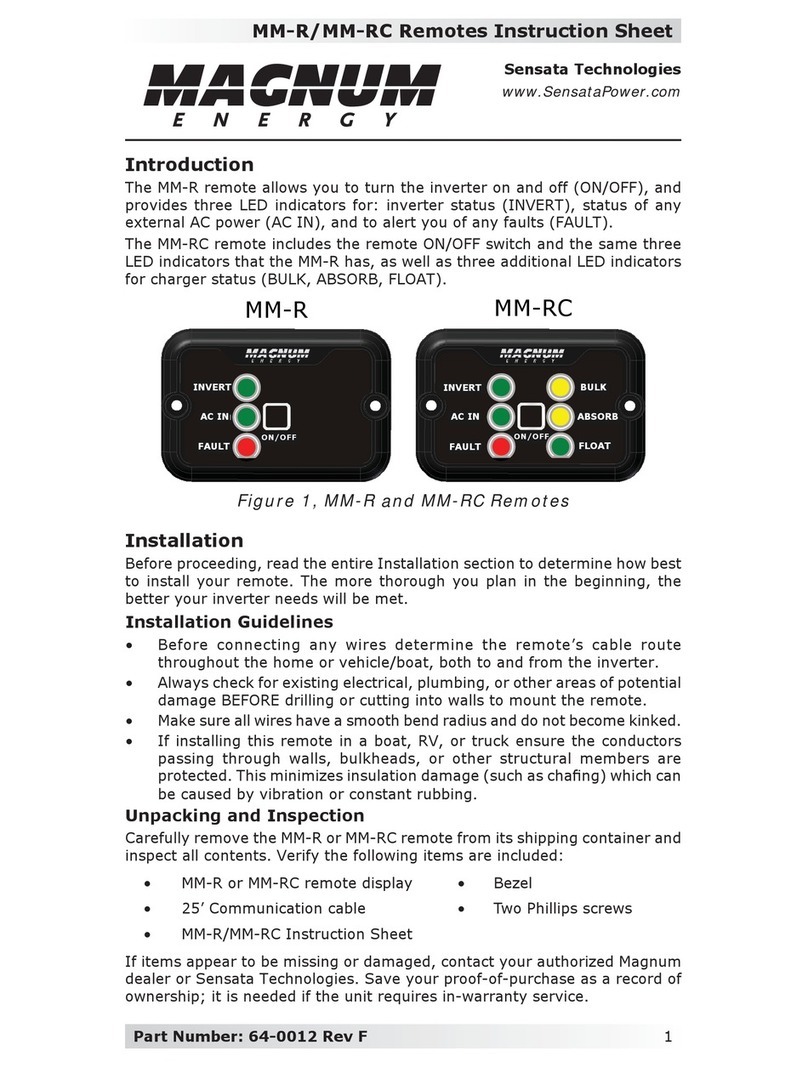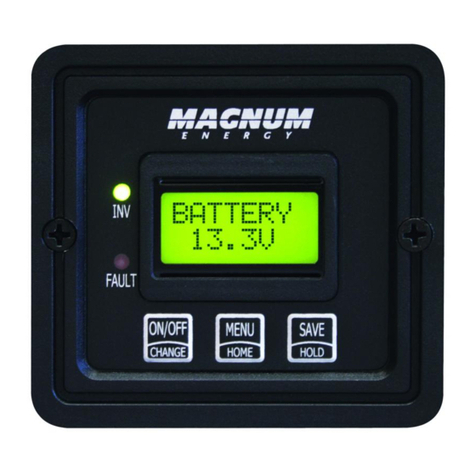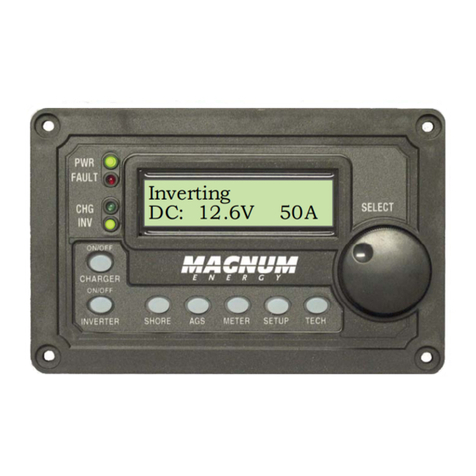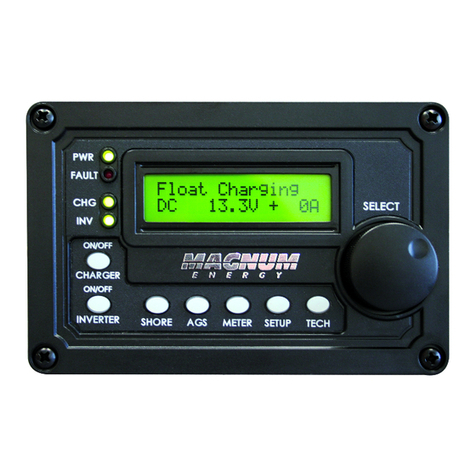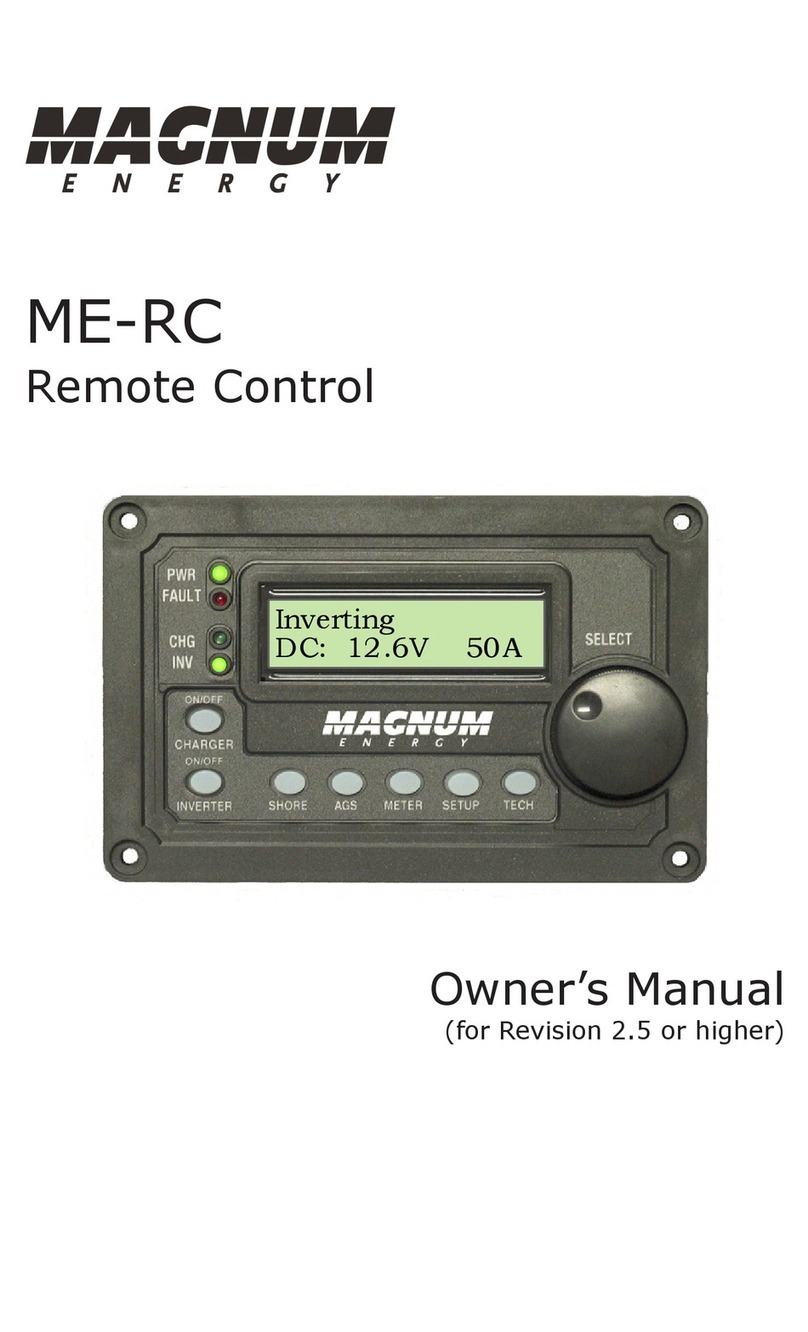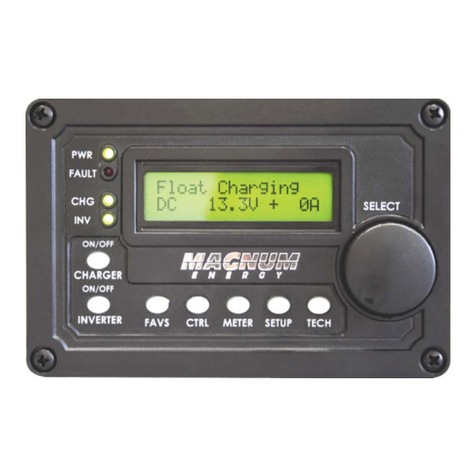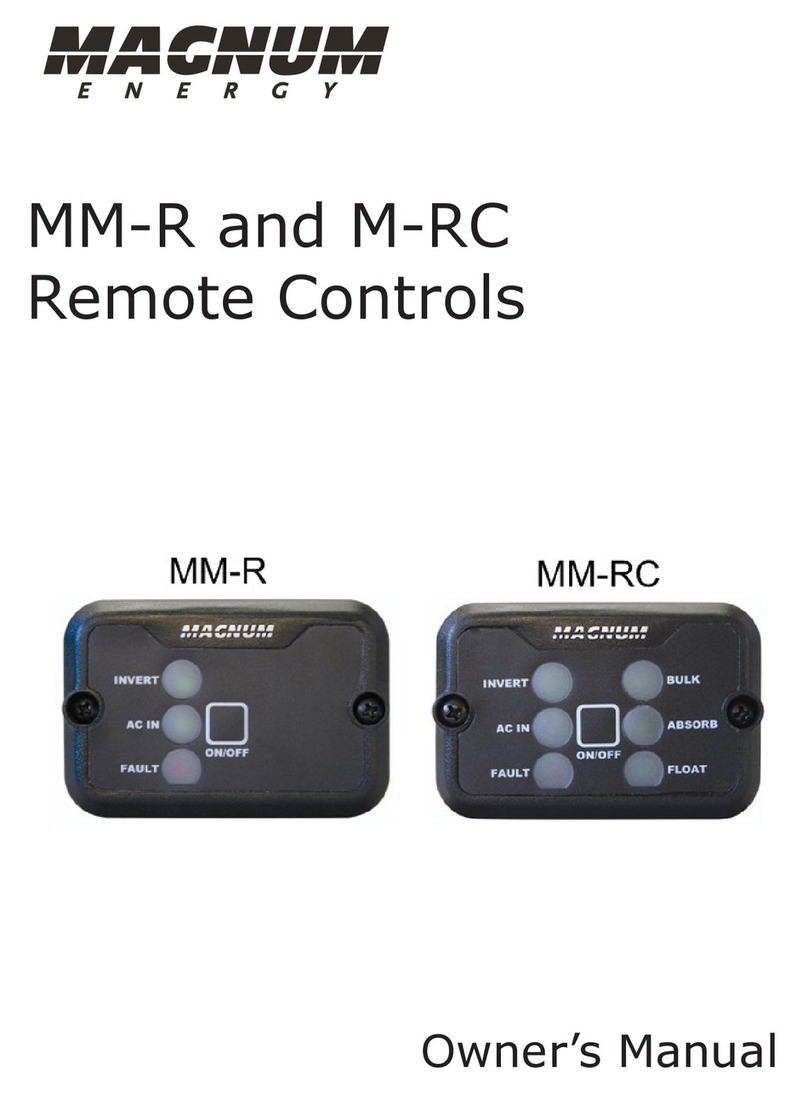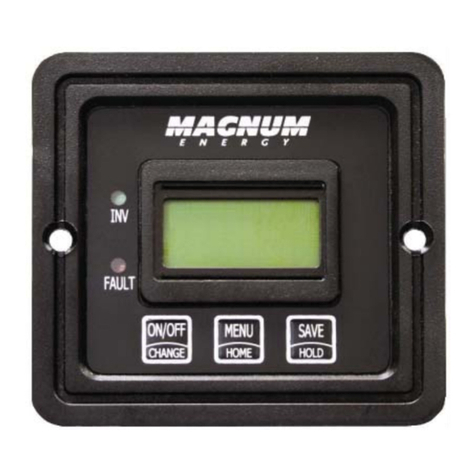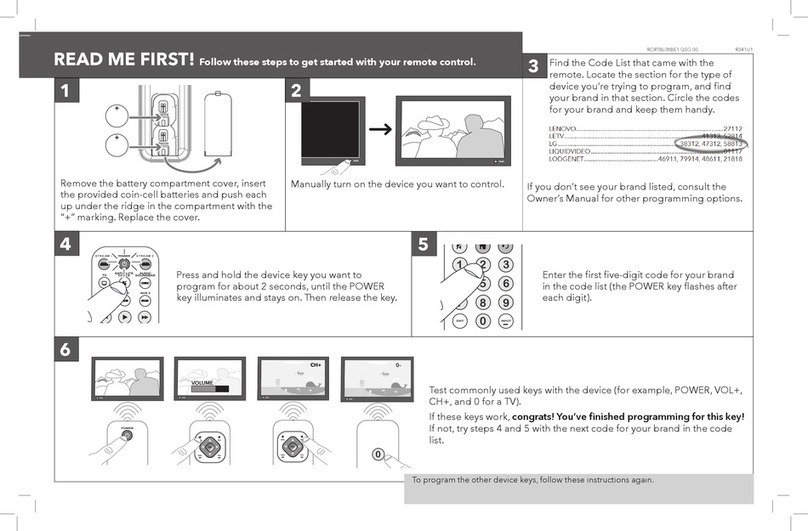
©2013 Magnum Energy, Inc. iv
List of Figures
Figure 1-1, Front Panel Features.......................................................... 1
Figure 2-1, Cut-Out Dimensions for Flush Mounted Remote ..................... 3
Figure 2-2, Bezel Dimensions for Surface Mounted Remote ..................... 3
Figure 2-3, Remote Control Connections ............................................... 4
Figure 3-1, Scrolling Home Screens ..................................................... 5
Figure 3-2, AC IN Selections ............................................................... 6
Figure 3-3, Search Watts Selections ..................................................... 7
Figure 3-4, Battery Amp-Hours Selections............................................. 8
Figure 3-5, Battery Type Selections.................................................... 10
Figure 3-6, Charge Rate Selections .................................................... 11
Figure 3-7, LBCO: Low Battery Cut-Out Selections ............................... 12
Figure 3-8, VAC Dropout Selections.................................................... 13
Figure 3-9, Power Saver Selections .................................................... 14
Figure 3-10, Equalize Selections ........................................................ 14
Figure 3-11, Charger Standby Selections ............................................ 15
Figure 3-12, Power On Selections ...................................................... 16
Figure 3-13, TECH Menus ................................................................. 17
Figure 4-1, ME-MR Remote Menu Map ................................................ 18
Figure 5-1, ME-MR Front Panel Controls and Indicators ......................... 19
Figure 5-2, Inverter Standby Mode .................................................... 21
Figure 5-3, Inverting Mode ............................................................... 21
Figure 5-4, Off Mode........................................................................ 22
Figure 5-5, Searching Mode .............................................................. 22
Figure 5-6, Absorb Charging Mode ..................................................... 22
Figure 5-7, Bulk Charging Mode......................................................... 23
Figure 5-8, Charger Standby Mode..................................................... 23
Figure 5-9, Charging Mode................................................................ 23
Figure 5-10, Equalizing Mode ............................................................ 24
Figure 5-11, Float Charging Mode ...................................................... 25
Figure 5-12, Full Charge Mode........................................................... 25
Figure 5-13, Load Support AAC Mode ................................................. 25
Figure 5-14, Load Support VDC Mode................................................. 26
Figure 5-15, Unknown Mode ............................................................. 26
Figure 5-16, AC Overload Fault.......................................................... 27
Figure 5-17, BackFeed Fault.............................................................. 27
Figure 5-18, Breaker Tripped Fault ..................................................... 28
Figure 5-19, Dead Battery Charge Fault.............................................. 28
Figure 5-20, FET Overload Fault......................................................... 28
Figure 5-21, High Battery Fault ......................................................... 29
Figure 5-22, High Battery Temp Fault ................................................. 29
Figure 5-23, High Volts AC Fault ........................................................ 30
Figure 5-24, Low Battery Fault .......................................................... 30
